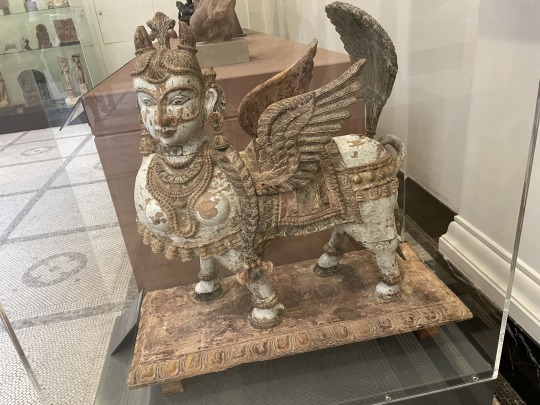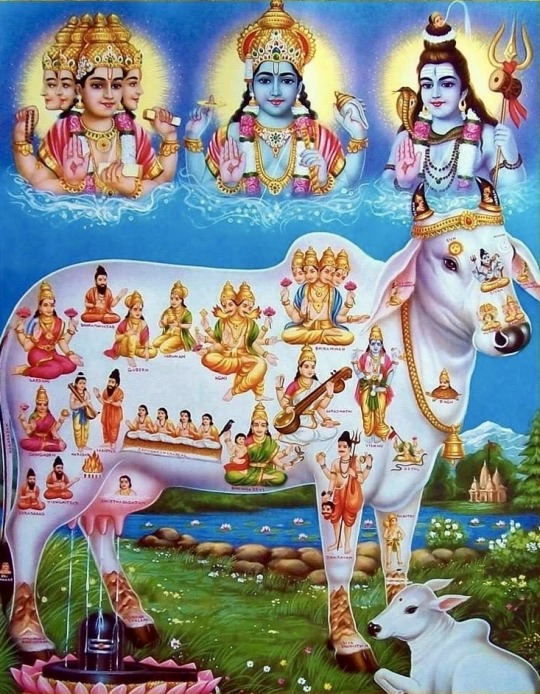#Kamadhenu
Explore tagged Tumblr posts
Text

3 notes
·
View notes
Text
#home decor#idol#statue#kamadhenu#brass idols#brass statue#brass buddha#brass collection#buddha#brass#idols
0 notes
Text
Silver Loan in Keelkattalai – Trusted Loan Services at Kamadhenugoldloan
Looking for a fast and secure Silver loan in keelkattalai? Kamadhenugoldloan offers hassle-free silver loan services with the best interest rates and flexible repayment options. Whether you need urgent cash for personal, medical, or business purposes, we ensure instant evaluation and approval based on the weight and purity of your silver items.
Our expert team at Kamadhenugoldloan ensures transparent procedures, zero hidden charges, and safe storage of your pledged silver ornaments. With years of trusted service in Keelkattalai, we are known for quick processing, minimal paperwork, and customer-friendly policies.
Walk into our branch today with your silver jewellery or articles and walk out with a loan in just minutes. Experience professionalism, security, and the best value for your silver only at Kamadhenugoldloan – your go-to destination for silver loans in Keelkattalai.
Visit kamadhenugoldloan to learn more and apply online!
0 notes
Text
#Vastu Wisdom: Enhance Prosperity with Kamadhenu Cow and Calf Statue#vastushastra#kamdhenucow#vastutips#vastutipsforhome#HomeVastuTips
0 notes
Video
నక్షత్రానికి కామధేనువుకు సంబంధం ఏమిటి | Comparison between Kamadhenu and...
#youtube#pslv tvpslv tv popular videoskamadhenuvunakshtralucomparison between kamadhenu and planetarykamadenuplanetrarynakshatralucomparisonavulu
1 note
·
View note
Text
Embark on a lucrative business venture by becoming a Durga Ghee distributor. Durga Ghee is a renowned brand known for its premium quality and pure desi ghee, made from the finest ingredients and traditional processes. To obtain further information, please visit GetDistributors.com and don't hesitate to reach out to us if you have any queries.
#VIRAT CRANE INDUSTRIES LTD.#Durga Ghee distributors#Kamadhenu Cow Ghee distributorship#Bhavani Ghee distributors wanted#distributors required for Durga Cow Ghee#Vijayawada#India
0 notes
Text

Ramesh Gorjala - Kamadhenu, 2024 - Acrylic on canvas
37 notes
·
View notes
Text

Kamadhenu
#hindu#hinduism#spirituality#temple#shiva#hindu mythology#lordshiva#parvati#kailasa#krishna#sanathanadharma#holy cow#cow#hindu paintings#hindu family#hindu art
37 notes
·
View notes
Text
Background of Samudra Mathan and Lord Shiva consuming Haalaahala
I want to remember the story of Lord Shiva drinking poison, as it holds great significance in our Hindu tradition. It shows our Lord's compassion towards us.

The story of Samudra Manthan begins during a time of conflict between the Devas and Asuras. After being defeated, the Devas sought help from Lord Vishnu, who advised them to churn the ocean of milk to obtain amrita, the nectar of immortality. To do this, they needed the strength of the Asuras, so the Devas proposed a partnership. Mount Mandara served as the churning rod, and the serpent Vasuki was used as the rope.
As they churned, various treasures emerged, such as Kamadhenu, Airavata, Kalpavriksha, Laxmi, and Dhanvantari, who brought the pot of amrita. However, amidst these wonders, a deadly poison named Haalaahala surfaced, threatening to destroy everything. Both the Devas and Asuras were terrified and turned to Lord Shiva for assistance.
Lord Shiva answered their prayers and, realizing the gravity of the situation, decided to consume the poison to save the universe. With great resolve, he swallowed the Haalaahala, holding it in his throat to prevent it from affecting him. This act turned his throat blue, earning him the name Neelkanth.
Once Lord Shiva contained the poison, the churning continued, and eventually, the amrita was produced.
A Slight Variation in the story according to different sources:
In the story of Samudra Manthan, Parvati's involvement with the poison is often mentioned in various retellings. According to some versions, after Lord Shiva consumed the Haalaahala poison to save the universe, Parvati became concerned for his well-being.
To protect him, she is said to have grasped his throat, preventing the poison from going further into his body. This act symbolizes her role as a nurturing and protective force. This detail is found in some texts and folklore, though it may not be emphasized in all versions of the story.
I personally love the story of how Lord Shiva consumed Halahala to protect us. It shows that he is capable of absorbing all our poisons and granting the amrita of liberation. There is nothing that can equal his mercy.
10 notes
·
View notes
Text

Kamadhenu (कामधेनु) is a divine, wish-fulfilling cow in Hindu mythology, often referred to as the "mother of all cows." She is considered a miraculous being that provides her owner with whatever they desire. According to Hindu scriptures:
Kamadhenu was born from the churning of the ocean (Samudra Manthan).She is associated with wealth, prosperity, and dharma and is considered a symbol of abundance.🕉
2 notes
·
View notes
Text




Svarga “Indra's abode” Talon Abraxas
Svarga is a set of celestial worlds located on and above Mount Meru, where those who had led righteous lives by adhering to the scriptures delight in pleasures, before their next birth on earth. It is described to have been built by the deity Tvashtar, the Vedic architect of the devas.
The king of the devas, Indra, is the ruler of Svarga, ruling it with his consort, Indrani. His palace in the abode is called Vaijayanta. This palace holds the famous hall, Sudharma, unrivalled among all the princely courts. The capital of Svarga is Amaravati, and its entrance is guarded by the legendary elephant, Airavata.: 84 Svarga is described to be the home of Kamadhenu, the cow of plenty, as well as Parijata, the tree that grants all wishes. The legendary Kalpavriksha tree grows in the centre of the Nandana gardens, which was planted there by Indra after it emerged from the Samudra Manthana, the churning of the ocean. Due to its location, Svarga is called Tridiva, the third highest heaven.
25 notes
·
View notes
Text
What are some lesser known facts about Bhagwan Parshuram?
Lord parashuram original name was bhargava rama , but he got a divine parashu (axe) from lord shiva , with the help of this parashu(axe) only he killed all the adharmi kshatriyas in the world by circling this planet for 21 times , he even killed sahasrabahu with this parashu (axe) , fought bheeshmah with this parashu (axe) , he also has a bow named vijaya which was given by parashuram to his student karna. Bhishmah , drona and karna are all students of lord parashuram , and parashuram is still alive meditating on the mahendragiri , he will come again when lord vishnu will come in the form of lord kalki , and he will train lord kalki in shambhala nagar , he is an partial incarnation of vishnu unlike rama , krishna and narasimha or varaha. His wife’s name is dharani , she is also partial incarnation of goddess lakshmi. His teacher was lord shiva himself , parashuram was devotee of shiva and student of shiva , he was son of rishi jamadagni , his mother was princess renuka , he had enemity with kartavirya arjuna because he stole kamadhenu from rishi jamadagni’s ashram for selfish reasons. Parashuram had siblings named vasu , viswavasu , brihudyanu , and brutwakanwa , they were descendants of brighu maharshi , that is why they are from bhargava vamsha (clan). In ramayana it is mentioned that parashurama gave the sharanga (kodanda) bow to lord rama and he recognized that rama was vishnu himself , after giving bow to sri rama , he went to mahendra giri and meditated there.
#parshuram#ramayana#ramayan#Ramcharitmanas#valmiki ramayan#ramayan sita#bhagavatam#mahabharata#srimadbhagavatam#mahabharat#bhagwan shiv#shrimadbhagwatgeeta#bhagvadgita#bhagavadgītā#bhagwatgeeta#bhagwan#bhagwad gita#astrology#lordkrishna#lord krishna#lordvishnu#lordshiva#lordram#krishna#hare krishna#chakras#harekrishna#haribol#hare#hare krsna
8 notes
·
View notes
Text
Komadha

The Komadha idol, representing the sacred divine cow, is revered as a symbol of abundance, nourishment, and motherhood in Hindu tradition. Often associated with Kamadhenu, the wish-fulfilling cow, worshipping this idol is believed to bring prosperity, fertility, and divine grace to one’s home. The idol’s craftsmanship beautifully captures the gentle and nurturing energy of Komadha, making it a spiritual and cultural treasure.
Business Enquiry: 6383910192.
For Gold Plating Needs – https://goldplatingartstudio.com/
For Bronze god idols – https://www.idolbronze.com/brass-idol
For Brass god idols – https://www.idolbrass.com/
Explore more idols – https://www.idolbrass.com/category/brass-god-statue
#Komadha #Kamadhenu #DivineCow #Prosperity #Nourishment #IdolBronze
0 notes
Text
Get Instant Cash for Silver – Best Gold & Silver Loan Services in Chennai
Looking to get instant Cash for silver? At Kamadhenugoldloan, we offer quick and secure loan services against your precious metals. Whether you need a loan against silver near me or you're searching for the best gold loan in Chennai, we are your trusted solution. As a gold loan best company, we specialize in providing high-value loans with minimal paperwork and maximum convenience.
With our silver loan online facility, you can now apply for a loan from the comfort of your home. Our experts ensure a fair evaluation of your silver or gold assets, offering the best market rates. Need urgent funds? Our gold finance near me services provide same-day disbursal with zero hidden charges and complete transparency.
If you’re in Chennai and searching for a gold loan near me, look no further than Kamadhenugoldloan. We are known for our customer-friendly services and flexible repayment options, making us the best gold loan in Chennai. Whether it’s for personal needs, business expansion, or emergencies—your silver and gold can get you the financial support you need, instantly.
Visit us today or apply online to turn your silver into instant cash—secure, fast, and hassle-free!
0 notes
Text
Surabhi Mata Idol
The Surabhi Mata Idol is a beautifully crafted spiritual masterpiece by Nirvaan Arts, India, symbolizing divine abundance and purity. Surabhi Mata, also known as Kamadhenu, is the sacred wish-fulfilling cow in Hindu mythology, revered for bestowing prosperity, wisdom, and well-being upon her devotees. This intricately designed idol captures the essence of devotion with exquisite detailing, making it an ideal addition to temples, homes, or meditation spaces.
Handcrafted by skilled artisans, this idol is made from high-quality materials, ensuring durability and aesthetic appeal. It serves as a perfect gift for religious occasions, housewarmings, and festivals like Diwali and Gopashtami. Worshiping Surabhi Mata is believed to bring divine blessings, prosperity, and harmony into one's life. Elevate your spiritual space with this divine creation from our company, India, and invite positive energies into your home.
0 notes
Video
youtube
(via Love of Mother Cow | ISKCON Talasari Farm - YouTube)
Oh sacred mother, gentle and kind, Feeding your calf-love divine. With eyes so soft, full of grace, A bond so pure time can't erase. Golden milk, nectar so sweet, A mother's gift-so pure, so deep. Softly licking, nuzzling near, A mother's touch-warm and dear. Oh Kamadhenu, blessed you are, Showered by Krishna's shining star. Giver of health, strength, and peace, Your loving care shall never cease. May we serve, protect, and pray, For your kindness every day. Mother cow, so pure, so true, All our hearts belong to you.
0 notes